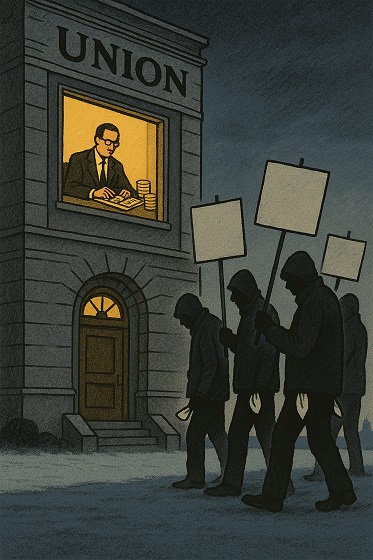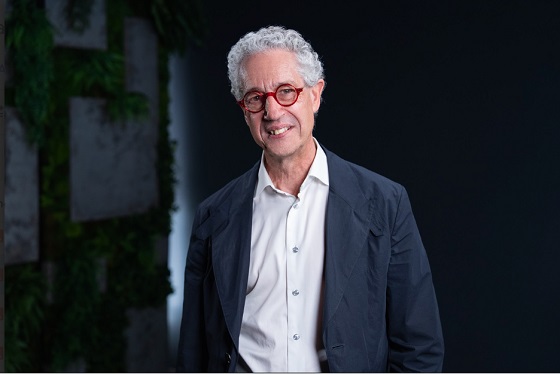Agriculture
Why Are Governments Attacking Farmers?
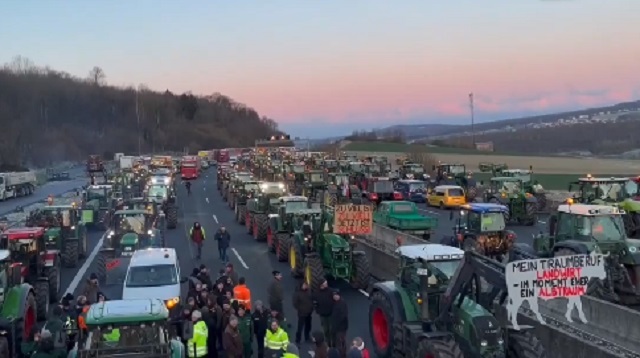
To approach the massive protests in Germany, especially for those who’ve heard very little about this massive upheaval, it might help to set up the context.
2024 is already proving to be a year of disruption and protest. 64 countries representing half of all people on the planet will be voting in national elections. Major elections will take place not just in the United States, but in the European Union, Russia, and in the world’s most populous democracy India.
Those conversations you’ve been having with only your most trusted cohorts, where you wonder how former friends and people you admire have become ideological combatants; are taking place all around the globe. We find ourselves identifying more and more people as either “far left” or “far right”. Even though we haven’t changed the way we think, we find we’ve also been identified by others as slipping into one of these “far” groups. Our sense of community and family are suffering and may not survive.
Why is this happening?
It comes down to where we choose to get information.
If you haven’t moved away from the legacy media yet, you’re far more likely to be disturbed by the growing numbers on the “far right”. You simply can’t understand how so many people you know have fallen victim to conspiracy theories and populist leaders who are trying to take the reigns of power.
If you have moved on to learn about the world through long form podcasts and some of the many new information platforms that have emerged, you’ll most likely be swayed by reams of information ignored by legacy media.
For tens of millions this started with the pandemic. A few months into 2020, podcasters and information sites began to notice that the average age of those dying from covid was older than normal life expectancy, that 86% of those who died were obese, that doctors around the world were successfully treating covid with cheap, repurposed drugs, and that masking, social distancing, lockdowns, and eventually covid vaccines made almost no impact on the spread of covid.
People in this camp tried to persuade those close to them that covid wasn’t as dangerous as they were lead to believe. Many conversations became emotional and annoying. One one side, raised voices of those desperate to share information. On the other side, perfectly intelligent people, informed by legacy media who had heard none of these things. Often they were told the opposite. A great example is how legacy media labelled one of the safest, cheapest and most effective drugs in world history (the developers won the Nobel Prize for inventing ivermectin) as ‘horse de-wormer’.
New media and long form podcasters have found the situation surrounding covid is the same for most other urgent situations. The inflation an energy crisis, the Russian attack of Ukraine, global warming (or climate change) and open border policies have only widened the information gap.
One side sees little reason to slow the movement of millions, or to slow the printing of money by governments unconcerned about sinking much, much further into debt. For this group the most important battles in the world are the fight to reduce carbon emissions and the war against Russia.
The other side sees a self inflicted inflation and energy crisis, a refusal to negotiate an end to the war in Ukraine, and a massive influx of immigrants beginning to cause societal upheaval.
As elections creep closer, the information gap is growing and the stakes are getting higher.
What does all this disruption and disunity have to do with massive demonstrations by German farmers? If you are a legacy media follower there is no connection. Legacy media outlets explain away this nation wide protest as farmers fighting against diesel fuel subsidies. By now, you should at least want to know what the podcasters and new media are reporting. Jordan Peterson is in that camp.
Last week, the world famous Canadian podcaster spoke with German farmer Anthony Lee and journalist Eva Vlaardingerbroek.
Eva Vlaardingerbroek is a Dutch journalist and Anthony Lee has become outspoken in recent months as he followed news of farmers struggling all across Europe. In the following videos (especially the longer one) the cause of these massive and spreading demonstrations will be explained by Eva, a new information reporter, and Anthony, a German farmer.
First a shorter video and for those with some more time their entire 100 minute long conversation.
From the YouTube channel of Jordan Peterson
A longer discussion on the ongoing farmers’ protest, the war on efficient agriculture, and net-zero goals creating excess electric vehicles while cutting off the generation of power.
This episode was recorded on January 15th, 2023
Dr. Peterson’s extensive catalog is available now on DailyWire+: https://bit.ly/3KrWbS8
Agriculture
Federal cabinet calls for Canadian bank used primarily by white farmers to be more diverse

From LifeSiteNews
A finance department review suggested women, youth, Indigenous, LGBTQ, Black and racialized entrepreneurs are underserved by Farm Credit Canada.
The Cabinet of Prime Minister Mark Carney said in a note that a Canadian Crown bank mostly used by farmers is too “white” and not diverse enough in its lending to “traditionally underrepresented groups” such as LGBT minorities.
Farm Credit Canada Regina, in Saskatchewan, is used by thousands of farmers, yet federal cabinet overseers claim its loan portfolio needs greater diversity.
The finance department note, which aims to make amendments to the Farm Credit Canada Act, claims that agriculture is “predominantly older white men.”
Proposed changes to the Act mean the government will mandate “regular legislative reviews to ensure alignment with the needs of the agriculture and agri-food sector.”
“Farm operators are predominantly older white men and farm families tend to have higher average incomes compared to all Canadians,” the note reads.
“Traditionally underrepresented groups such as women, youth, Indigenous, LGBTQ, and Black and racialized entrepreneurs may particularly benefit from regular legislative reviews to better enable Farm Credit Canada to align its activities with their specific needs.”
The text includes no legal amendment, and the finance department did not say why it was brought forward or who asked for the changes.
Canadian census data shows that there are only 590,710 farmers and their families, a number that keeps going down. The average farmer is a 55-year-old male and predominantly Christian, either Catholic or from the United Church.
Data shows that 6.9 percent of farmers are immigrants, with about 3.7 percent being “from racialized groups.”
National census data from 2021 indicates that about four percent of Canadians say they are LGBT; however, those who are farmers is not stated.
Historically, most farmers in Canada are multi-generational descendants of Christian/Catholic Europeans who came to Canada in the mid to late 1800s, mainly from the United Kingdom, Ireland, Ukraine, Russia, Italy, Poland, the Netherlands, Germany, and France.
Agriculture
Bovaer Backlash Update: Danish Farmers Get Green Light to Opt Out as UK Arla Trial Abruptly Ends!
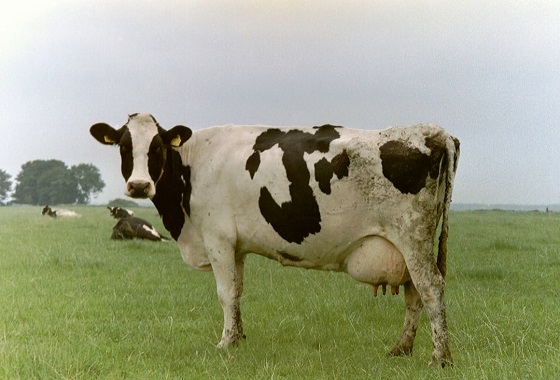
In a pivotal shift, Denmark’s Veterinary and Food Administration has issued new guidance: Farmers can immediately suspend Bovaer administration if they “suspect” it poses risks to herd health. On the heels of the Danish announcement—the major UK trial of Bovaer on 30 Arla Foods farms has abruptly ended amid health fears.
The Mandate Cracks: Farmers Given the Green Light to Opt Out
On November 5, 2025, Denmark’s Fødevarestyrelsen (Danish Veterinary and Food Administration) issued a press release and accompanying guidance clarified that farmers (specifically the herd manager, or besætningsansvarlige) could immediately exempt individual cows or entire herds from the mandatory Bovaer use if they suspected it was causing or exacerbating health issues, prioritizing animal welfare under existing regulations.
Sonia Elijah investigates is a reader-supported publication.
To receive new posts and support my work, consider becoming a free or paid subscriber.
This was in response to surging reports of cow illnesses since October 1, where farms with over 50 cows have been mandated to use the synthetic additive, Bovaer (containing 3-nitrooxypropanol), developed by DSM-Firmenich. If the farms do not comply, they face heavy fines.
Bovaer Backlash: Danish Cows Collapsing Under Mandatory Methane-Reducing Additive |
||||||
|
||||||
| Article updated: November 4 | ||||||
|
The guidance emphasized that exemptions apply to cases of feed-related metabolic disorders (e.g., fatty liver, milk fever, or rumen issues) and require documentation via a “tro- og loveerklæring” (declaration of good faith) on LandbrugsInfo, with veterinary consultation recommended for severe cases. No fines would apply for such welfare-based pauses, though farmers must still meet methane reduction goals via alternatives like increased feed fat. This effectively gave the “green light” for opting out on welfare grounds.
Reports surged of Danish dairy farmers unilaterally halting Bovaer administration, accusing the government of “poisoning” livestock to meet climate targets.
A November 3, 2025, article in LandbrugsAvisen (Denmark’s leading agricultural newspaper), quoted veterinarian Torben Bennedsgaard from BoviCura (a specialized cattle health advisory service closely tied to Danish dairy producers). He stated: “Every other farmer has problems with Bovaer.”
“Bovaer is a proven, effective and safe solution”
A spokesperson for DSM-Firmenich, the company that developed Bovaer, told Agriland, that “animal welfare is our highest priority”. They went on to state: “We are actively engaging with the relevant organisations to ensure that all these concerns are fully investigated and properly addressed..In previously reported cases, Bovaer was not identified as a contributing factor to the health concerns raised…Bovaer is a proven, effective and safe solution that has been successfully used for over three years by thousands of farmers in over 25 countries.”
UK Ripple Effects: Arla Trial Abruptly Halted
On 7 November, the BBC reported that the major UK trial of Bovaer on 30 Arla Foods farms concluded earlier than planned amid “farmer health concerns” for cows, echoing Danish reports. It stated: ‘Bovaer is now the focus of an investigation in Denmark after farmers raised fresh concerns but manufacturer DSM-Firmenich said the additive was “proven, effective and safe.”’
Arla, which supplies major retailers like Tesco and Aldi, is now reviewing data before deciding on wider rollout. The trial aimed to cut methane by 30% but faced criticism for lacking transparency on animal impact.
Jannik Elmegaard, of the Danish Food and Veterinary Administration, told the BBC: “They very aware that some herd owners have reported animals showing signs of illness after being fed with Bovaer” but it was “unclear how many cows were affected”.
Last year, I reported on the UK’s Arla trial—whilst digging through various safety assessment reports on Bovaer, I came across several troubling findings and anomalies.
BREAKING: Methane-Reducing Feed Additive Trialled in Arla Dairy Farms |
||||||
|
||||||
| On November 26th, Arla Foods Ltd. announced via social media their collaboration with major UK supermarkets like Tesco, Aldi, and Morrisons to trial Bovaer, a feed additive, aiming to reduce methane … | ||||||
|
In a public rebuttal, Frank Mitloehner, Professor of Animal Science at UC Davis and Director of the Clarify Center for Enteric Fermentation Research, posted on X ”Hogwash!”—dismissing viral claims of Bovaer-related cow health issues in Denmark by highlighting his lab’s ongoing research and widespread U.S. usage data.
The green light in Denmark is not a mere victory—it’s a damning admission that the emperor’s new feed has holes big enough for a whole herd to escape through.
As Arla licks its wounds and DSM-Firmenich doubles down on “proven safe,” the real trial begins: can climate crusaders stomach the science when it bites back?
If you appreciate the hard work that I do as an independent investigative journalist,
please consider supporting me with a paid subscription.
Subscribe to Sonia Elijah Investigates
-

 Alberta1 day ago
Alberta1 day agoAlberta on right path to better health care
-

 Daily Caller2 days ago
Daily Caller2 days agoDemocrats Explicitly Tell Spy Agencies, Military To Disobey Trump
-

 Daily Caller2 days ago
Daily Caller2 days agoALAN DERSHOWITZ: Can Trump Legally Send Troops Into Our Cities? The Answer Is ‘Wishy-Washy’
-

 Alberta2 days ago
Alberta2 days agoAlbertans choose new licence plate design with the “Strong and Free” motto
-

 Crime1 day ago
Crime1 day ago‘Modern-Day Escobar’: U.S. Says Former Canadian Olympian Ran Cocaine Pipeline with Cartel Protection and a Corrupt Toronto Lawyer
-

 Business2 days ago
Business2 days agoClimate Climbdown: Sacrificing the Canadian Economy for Net-Zero Goals Others Are Abandoning
-
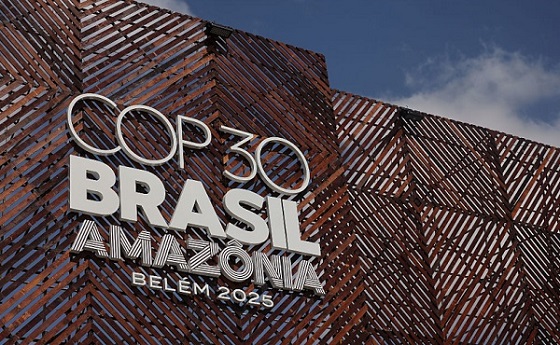
 Great Reset2 days ago
Great Reset2 days agoAre climate-obsessed elites losing their grip over global politics?
-

 Alberta1 day ago
Alberta1 day agoAlberta Emergency Alert test – Wednesday at 1:55 PM











